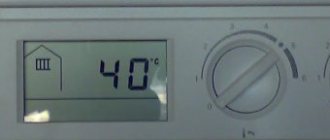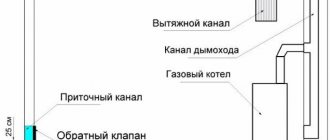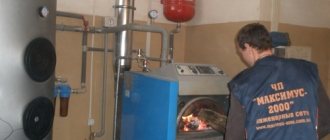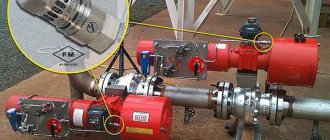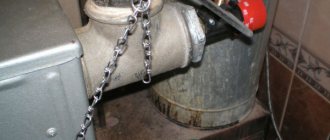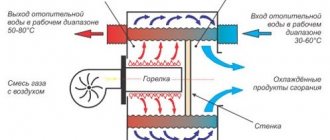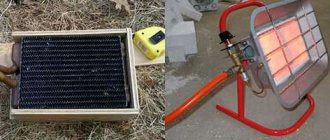Gas convectors - technical characteristics or what is it?
Essentially, we have before us a simple heating device consisting of a heat exchanger in an attractive housing and a gas burner.
Construction of a gas heating battery
An excursion into history: back in the 19th century, rooms were heated and illuminated with gas, and even in those days this heating method was cheap, convenient and practical. But then the heating systems and lighting ran on acetylene and were ordinary gas jets, i.e. open burners. Such burners required adjustment to minimize the volume of soot. In addition, combustion products exited the room through a common single ventilation. At the same time, oxygen was consumed to maintain combustion from the volume of the room.
Gas heating convectors have several pleasant innovations, which, ultimately, make them modern heating batteries from rarities:
- The gas flow rate is automatically adjusted, which means more economical gas consumption. A simple thermostat turns off the burner or switches it to maintain the flame when the required temperature is reached. If it becomes 3° less, then the fire lights up again.
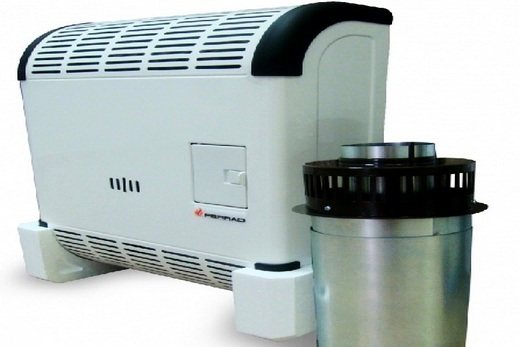
Closed type gas heater - The flame heats the heat exchanger, and not the actual air in the room.
- For most models of modern gas heaters (convectors), air to support combustion comes from the street. And combustion products are removed there too. In this case, it is not a fan that is used, but a pipe in a pipe, the so-called. “coaxial duct”, which is discharged through a different opening.
These are closed-type gas heating convectors. However, there are also so-called open-type gas heating batteries that take air from the room and discharge combustion products into the general ventilation system. Such gas convectors are in great demand due to their easy installation: for heating you just need to connect the battery to the gas source.
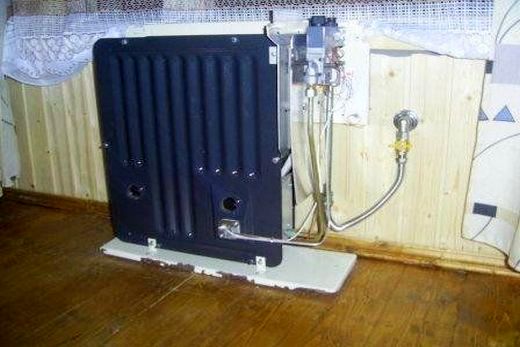
Open type gas heating appliance
If you are interested in what other modern options for heating apartments exist, see the review at the link:
Equipment startup and performance check
Before you start using your new heating device, it is important to conduct a test run. You should proceed according to this scheme.
- Open the gas valve and check the system joints for leaks.
- After checking, you can turn on the convector. For the first time, you need to hold the start button for 1 minute and wait until the gas penetrates the combustion chamber.
- Do you see the burner lit? Now you can adjust the operation of the convector.
Important: installation of a gas convector in a wooden house is absolutely safe, because fire hazardous parts are located in the inside of the heater.

To summarize, we note: despite the fact that a gas heater is not a very popular heating device, it can be used to create a comfortable temperature in dachas and country houses. The unit quickly and efficiently heats the air in the room, and at the same time is much more economical than an electric radiator. Another obvious advantage is the ability to connect to a gas cylinder. One dubious circumstance can be considered that the gas convector heats only one room, and not the whole house, unlike a gas boiler connected to the heating system.
We hope that the article was useful and helped resolve the problem!
Operating principle of a gas convector
The mechanism of operation of a gas heating device is as follows:
- The gas that enters the convector through a gas pipeline burns in a closed combustion chamber.
- Each battery is supplied with a special coaxial flue. Due to the flow through the pipe with hot combustion products, fresh air enters the room already heated, which allows the efficiency of the heating device to increase due to the possible combustion of fuel in the chamber.
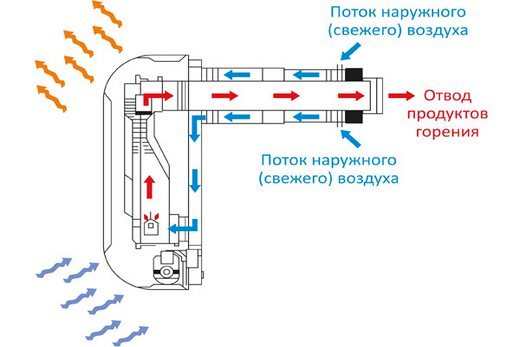
The operating principle of a gas convector is schematic - The air in the room begins to flow through the convector heat exchanger in a continuous flow due to convection. That is, the air, heating up in the heat exchanger, becomes lighter and, making room for a new cold air flow, rises.
Selecting a convector
How to choose a gas convector? First of all, attention is drawn to the technical characteristics of the unit. The best option is a device with a closed combustion chamber and a cast iron heat exchanger. The presence of a programmable control unit is considered important. Let's look at other factors that you should pay attention to when choosing a household gas convector.
Device power
Since heating occurs due to air circulation, the units operate effectively in only one room. Therefore, each room will require the installation of a separate unit. Power is determined from the calculation: 100 W are required per 1 m2 of area.
Heat exchanger material
Since gas heating convectors operate on gas, which burns in a special chamber, the heat exchanger is exposed to strong temperature effects. If it burns out after some time, the device fails. Therefore, the material of this part must be resistant to high temperatures. The leader among materials for heat exchangers is cast iron. This metal is resistant to thermal stress; in addition, it cools very slowly and distributes heat evenly. Gas convectors with a cast iron heat exchanger can last up to 50 years. The main disadvantages of such devices are the high price and large mass of the unit. A heater with a steel heat exchanger is cheaper and lighter. But when choosing a unit, you should pay attention to the quality of the steel. Steel heat exchangers can last at least 20 years.
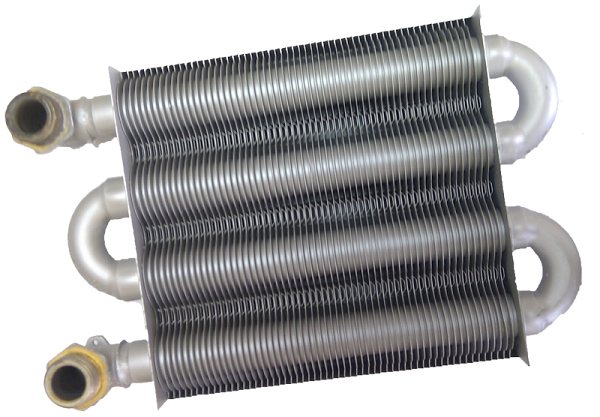
Combustion chamber type
Heaters may differ in design based on the type of combustion chambers:
- Open combustion chamber. Installation of a unit with such a chamber requires the installation of a chimney with access to the roof. In addition, when the unit is operating, air will be taken from the room to maintain the combustion process. Therefore, good ventilation of the room is required.
- Closed combustion chamber. Such models are more popular because they do not require a pipe outlet through the roof (a coaxial pipe is installed opposite the device). And another advantage is that the oxygen in the room is not burned, since the air is taken from outside the building.
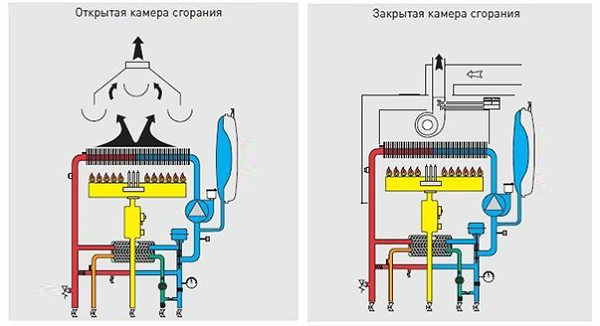
Availability of a fan
A gas convector with a fan quickly and evenly heats the entire room. Due to the forced air supply to the heat exchanger, the latter is cooled better. And since overheating is prevented, the service life of the heat exchanger is significantly increased.
Gas convector – DIY installation
Only specially trained people can install a gas heating convector, observing regulatory requirements and safety measures.
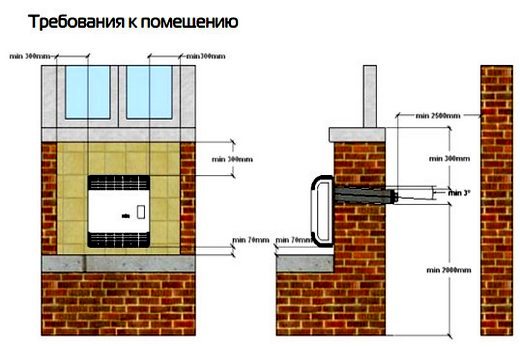
The basic requirements for a safe installation are clear from the diagram

Installation of gas outlet pipe
Only professionals can install a gas convector heater correctly.
on how to install a gas convector here:
73831.7586f9b8c15cfca120f27d392028
In general, gas heating convectors are an excellent alternative to both a central water heating system and an electric one.
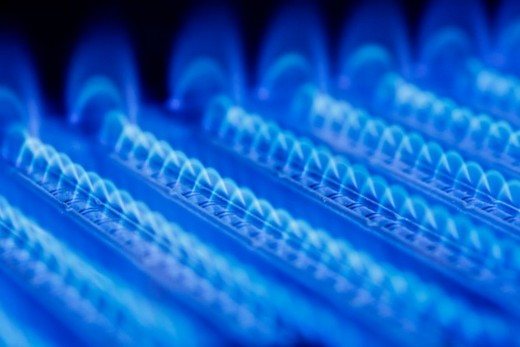
Cost-effectiveness of a heating gas convector
Required tools and installation diagram
The next step after purchasing the device is preparation for installation. Make sure you have the following materials and tools on hand:
- pipe cutter,
- drill,
- drill,
- adjustable wrench,
- spanners,
- screwdrivers,
- hammer drill,
- spatula,
- silicone (plumbing, high temperature),
- screws and dowels,
- gas tap.
Now you can move on to the next stage - choosing the installation location.
It is important to act in accordance with GOST! Before you begin installation, take careful measurements, markings and “trying on” the convector. Please note that the room in which you plan to install the heater must be prepared. Remove furniture from the room or cover furnishings with polyethylene, since working with a hammer drill is a rather dusty business.
Installation of a gas convector is carried out according to the following scheme.
- Decide where the hole for the gas pipe entry will be.
- Make a hole in the wall with a hammer drill, focusing on the diameter of the future pipe. This stage is the most labor-intensive.
- The next step is to drill holes for the heater mounts and hammer in the dowels.
- Connect the convector to the exhaust pipe. Be sure to seal the joint with silicone that can withstand high temperatures.
- The heater is attached to the wall with self-tapping screws. At this stage you will need help, because the unit has an impressive weight.
- The final stage of installation is to fill holes and cracks with foam to prevent cold air from entering the room.
We bring to your attention an educational video dedicated to the installation of a gas convector.
Gas convectors - consumer reviews
On the website teplo.guru (https://teplo.guru/obogrevateli/gazovye/gazovye-konvektory-chto-dumayut-polzovateli.html) user Vladimir shares: “In January, we had a long-awaited gas convector installed. Now only 62 rubles have been burned. Of course, in the first month there was more, but then they were just warming up the apartment (15 sq. m). Previously, we paid for heating per month - from 700 to 900 rubles. and there were frequent interruptions: there was no water - we were cold, the lights were turned off - it was cold again. And now we don’t know any problems. In general, a gas heating convector is a great thing, I advise everyone to install it! The main thing is that it is installed quickly and the costs are low. There is nothing complicated: we punched one hole (no pipes were used) and placed the hood under the window. And when we open the window, there are no emissions.”
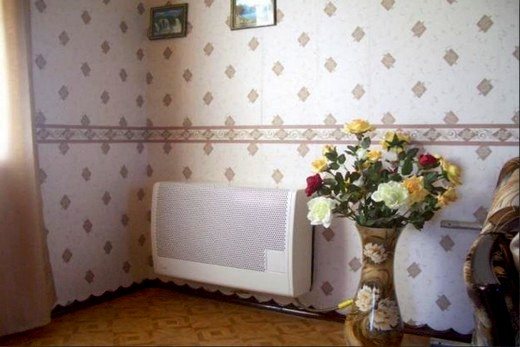
Gas heating radiator in the interior of the apartment
On the same site (https://teplo.guru/obogrevateli/gazovye/gazovye-konvektory-chto-dumayut-polzovateli.html) user Alexey says: “I hesitated for a long time and finally installed gas and installed convectors. Now the house has a constant temperature: +26°C. There are no complaints about the operation of this heating device. The air dries in the same way as conventional batteries. And the principle of operation of a gas convector is to turn it on and forget it. At the same time, the interior became more beautiful with them.”
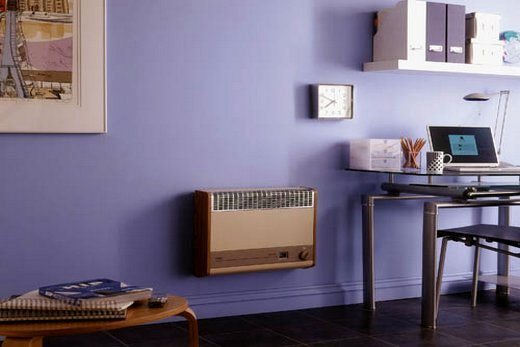
A gas convector will perfectly complement any interior
On the “House and Dacha” forum (https://www.forumhouse.ru/threads/183266/), user Ruslan shares: “2 years ago, the question arose about heating the 1st floor of a house with an area of 100 square meters. m. I read reviews about various heating devices for a long time and in the end I gave preference to gas convectors. They have many advantages: they heat only air, significant gas savings (about 50%) compared to gas boilers. You can also do the installation yourself (the installation took me 3 hours) and they work automatically, maintaining the required temperature.”
Interesting on the topic:
- Where to buy precision air conditioner
- How and where to buy “Fire battery”
- Where to buy cast iron radiators
- Bimetallic radiator oasis
- Bimetallic radiators "Rifar" "Monolit"
- Where to buy kermi radiators
